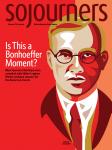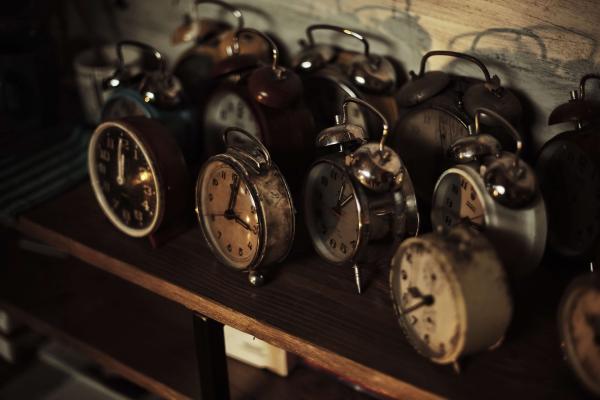This article appears in the February 2018 issue of Sojourners magazine. To subscribe, click here .
AS FAR AS WE know, Nov. 18, 1883, was the only day in history to have two noons. In a move to standardize haphazard railroad timetables, the United States was divided into time zones. Major cities wound their clocks to a newly designated “noon,” suddenly separated from their neighbors into zones of “now” and “not yet.”
Some newspapers and bulletins responded with humor. “We were not so far behind as [Maine], and therefore do not need so great an advance,” one Trenton, N.J. paper joked.
But this existentially momentous event was largely observed with pragmatism. “When the reader of THE TIMES consults his paper at 8 o’clock this morning at his breakfast table it will be ... 6 o’clock in Denver, Col. and 5 o’clock in San Francisco. That is the whole story in a nut-shell,” declared The New York Times. The slight change was necessary for standardization—time zones meant progress, efficiency, growth. Who could argue?
And so there was noon, and there was noon again, on that first day.
In the U.S., and soon around the world, time was domesticated. Humans had harnessed a mysterious, elemental power, and bent it to their will. “Time reformers” became the pioneers of the future.
Now, 135 years later, some religion scholars point to the creation of standardized time zones as an inflection point in our society’s relationship with mechanical technology. In Boston, at the annual meeting of the American Academy of Religion, a group of researchers recently presented their studies of the intersections of religion and technology in the United States. Capitalism, and its reliance on standardized time, seemed particularly nettlesome. “Does a clock have anything to do with religion?” asked Kati Curts, historian of religion at Sewanee: The University of the South.
Time has always played a role in religion—whether used as a marker of holy days and seasons, or as litanies calling faithful to prayer at marked times of day. But with mechanical technologies, time became a unit of measurement for production and consumption. Efficiency and the movement of things replaced presence and the movement of the spirit as an organizing value. For the wealthiest Western nations, standardizing time has improved our economies, our communication, and our quality of life.
Yet standardizing time has not answered our spiritual searches. (It sometimes confuses them even more—this year we celebrate Ash Wednesday on the same day as Valentine’s Day, a strange recipe for contemplating the nature of love.)
And the 1880s notion of “time reformers,” who championed reducing a universal, embodied experience to its most efficient, disembodied parts and reordering the world accordingly, echo much about our notions of “tech pioneers” today.
“Modern timekeeping did not simply emerge; it had to be imposed,” wrote Ian P. Beacock. “Technology changes the world not by its own Promethean logic but rather according to ours.”
Time in our own image is finite and always about to run out.
But with each other, and with the divine, we can find the wealth of communion. We can celebrate the lavish love we bestow on each other and simultaneously confront our impulse to destroy others made in the image of love. We do not have to be afraid of “spending” more time on one or the other. We are in no hurry. We have all the time in the world

Got something to say about what you're reading? We value your feedback!

